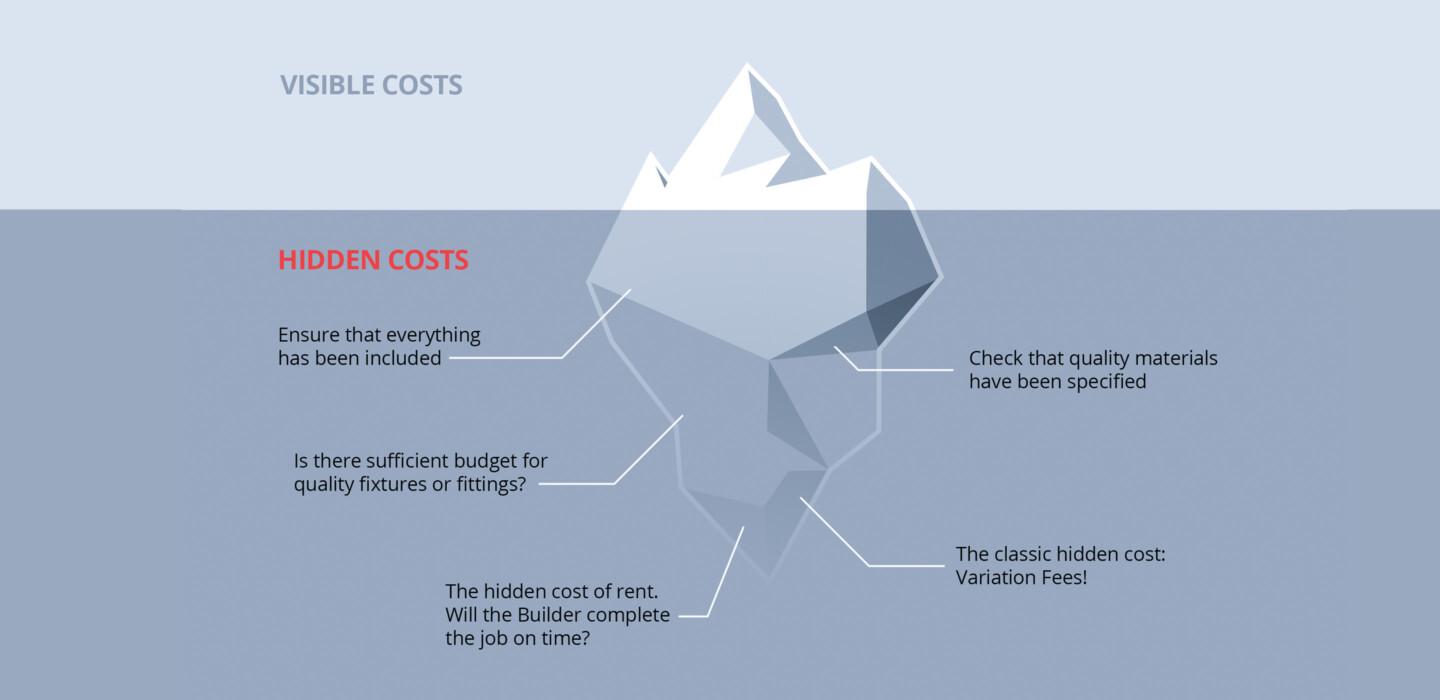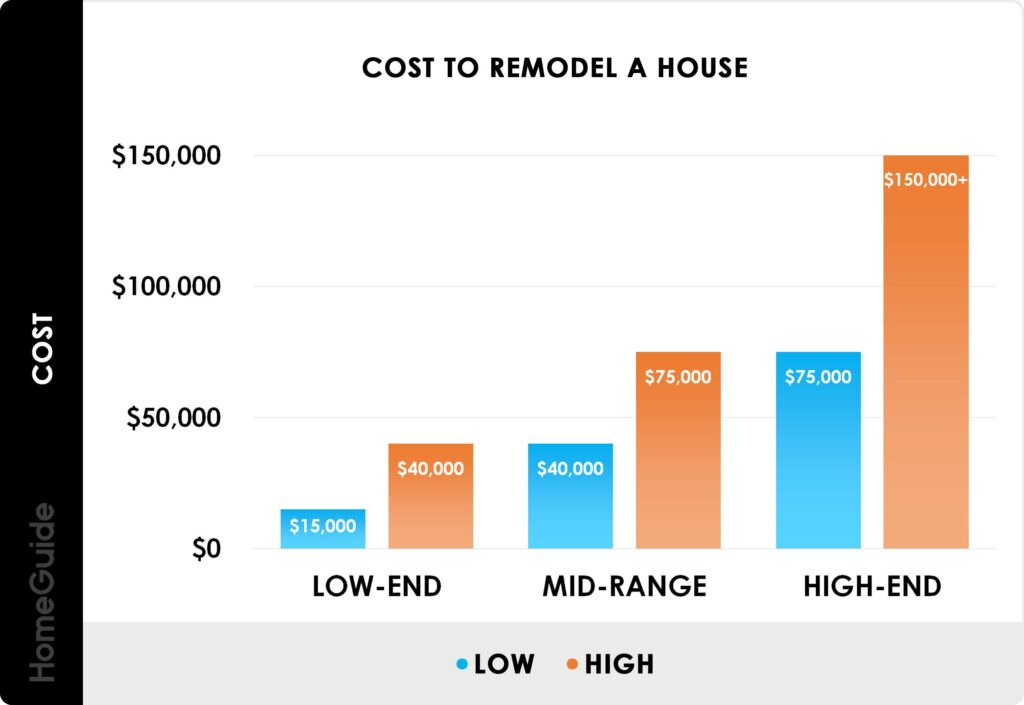Renovations promise the thrill of transformation-a fresh kitchen, a stylish bathroom, or an inviting open floor plan. Yet, behind the excitement of design choices and contractor bids lies a less glamorous reality: hidden costs that can quietly inflate your budget and complicate your project. From unexpected repairs to overlooked permits, these sneaky expenses often catch homeowners off guard. Understanding what to watch for before you pick up that hammer can mean the difference between a dream renovation and a financial headache. In this article, we’ll uncover the common hidden costs lurking beneath the surface, helping you navigate your renovation journey with eyes wide open.
Table of Contents
- Unexpected Structural Surprises That Inflate Budgets
- Navigating Permit Fees and Regulatory Requirements
- The Impact of Material Upgrades on Overall Expenses
- Labor Costs Beyond the Initial Estimate
- Managing Delays and Their Financial Consequences
- Frequently Asked Questions
- In Retrospect

Unexpected Structural Surprises That Inflate Budgets
Renovations often unearth more than just dust and old paint-unexpected structural issues can quickly balloon your budget beyond initial estimates. What starts as a simple wall removal or floor replacement can reveal hidden damage like termite infestations, dry rot, or outdated, unsafe wiring that requires immediate attention. These surprises aren’t just costly; they can also derail timelines and complicate project planning.
One common culprit is subfloor damage. Beneath your gleaming hardwood or tile, wood joists may be compromised by moisture or pests, necessitating extensive repairs or even replacement. Similarly, old plaster walls might conceal cracks or mold that demand remediation before any cosmetic upgrades. The deeper you dig, the more likely you’ll encounter these costly detours.
Here are a few frequent hidden structural issues that tend to inflate renovation costs:
- Damaged foundation or cracks requiring professional stabilization
- Outdated plumbing that doesn’t meet current codes
- Asbestos or lead paint removal
- Water damage behind walls or under floors
To help visualize the potential financial impact, here’s a quick breakdown of typical hidden costs:
| Issue | Average Repair Cost | Impact on Timeline |
|---|---|---|
| Foundation Crack Repair | $2,000 – $10,000 | 2-4 weeks |
| Subfloor Replacement | $1,500 – $5,000 | 1-3 weeks |
| Asbestos Removal | $3,000 – $7,000 | 1-2 weeks |
| Water Damage Repair | $1,000 – $6,000 | 1-3 weeks |
Being prepared for these structural curveballs by budgeting a contingency fund and consulting with experienced inspectors early on can save you from costly headaches. While surprises are inevitable, a proactive approach helps keep your renovation from spiraling out of control.
Navigating Permit Fees and Regulatory Requirements
Renovating a home often means more than just buying materials and hiring labor. One of the less obvious expenses comes from navigating the maze of permits and regulations required by local authorities. These fees can vary widely depending on the scope of your project and where you live, but they often add a significant chunk to your budget-sometimes catching homeowners off guard.
Before you swing that hammer, it’s crucial to research which permits apply to your renovation. Projects such as electrical work, plumbing upgrades, or structural changes typically require official approval. Skipping this step can lead to hefty fines or even having to undo completed work, which can be both costly and time-consuming.
Here are some common fees and requirements to keep in mind:
- Application Fees: Initial charges for processing your permit request.
- Inspection Fees: Costs associated with required inspections during and after the project.
- Impact Fees: Sometimes charged to cover the effect your renovation has on local infrastructure.
- Renewal or Extension Fees: If your project timeline slips, you might need to pay extra to keep permits valid.
| Permit Type | Typical Cost Range | Required For |
|---|---|---|
| Building Permit | $400 – $2,000 | Structural changes, additions |
| Electrical Permit | $100 – $500 | Wiring, new circuits |
| Plumbing Permit | $150 – $600 | New pipes, fixtures |
| Mechanical Permit | $100 – $400 | HVAC and ventilation |
Understanding these hidden costs upfront allows you to budget realistically and avoid unexpected delays. If you’re unsure about the regulations in your area, consulting with a local contractor or building official can save you both time and money in the long run.

The Impact of Material Upgrades on Overall Expenses
When considering a renovation, opting for high-end materials often feels like a surefire way to elevate your home’s value and aesthetic. However, it’s crucial to recognize that these upgrades can significantly swell your budget beyond initial estimates. Premium materials such as hardwood flooring, natural stone countertops, or custom cabinetry not only come with higher price tags but also usually entail increased labor costs due to the specialized skills required for installation.
Beyond the upfront expenses, some luxury materials demand ongoing maintenance that can strain finances over time. For instance, exotic wood floors might require special cleaning products and periodic refinishing to keep their luster, while imported tiles could be more prone to cracking and difficult to replace if damaged. These long-term upkeep considerations often slip under the radar during the planning phase.
Understanding how these factors interplay can help you make more informed decisions. Here’s a quick glance at how material upgrades might impact your wallet:
- Initial Purchase: Premium materials can cost 2-3 times more than standard options.
- Installation Complexity: Skilled labor often demands higher hourly rates and longer project timelines.
- Maintenance and Repairs: Specialized upkeep increases ongoing expenses.
| Material Type | Average Cost per Sq Ft | Maintenance Frequency | Installation Difficulty |
|---|---|---|---|
| Engineered Hardwood | $7 – $12 | Low | Medium |
| Natural Stone Tile | $15 – $30 | Medium | High |
| Quartz Countertops | $50 – $70 | Low | Medium |
| Custom Cabinetry | $500 – $1,200 per linear ft | Medium | High |
By factoring in these hidden costs early, you can balance your desire for quality with realistic budget expectations, preventing unpleasant surprises once the renovation is underway.

Labor Costs Beyond the Initial Estimate
When budgeting for a renovation, labor costs often represent a significant portion of the total expense. However, the initial estimate you receive rarely captures the full scope of these costs. Unforeseen challenges such as delays, overtime, and the need for specialized skills can quickly inflate the labor budget beyond expectations.
One of the most common culprits is scope creep. As projects evolve, homeowners may request additional features or modifications that weren’t part of the original plan. These changes, while exciting, demand extra hours from workers and can disrupt the project timeline. Additionally, unexpected structural issues uncovered during demolition often require skilled labor to address, further driving up costs.
- Overtime and rush fees: When contractors face tight deadlines or unexpected delays, overtime labor rates often apply.
- Specialized trades: Some tasks require experts like electricians or plumbers, whose rates can exceed general labor costs.
- Permit and inspection delays: Waiting on approvals can stall work, leading to higher labor expenses as crews remain on standby.
| Factor | Impact on Labor Costs |
|---|---|
| Design Changes | +15% to +30% |
| Unexpected Repairs | +20% to +40% |
| Overtime Work | +25% to +50% |
| Specialized Labor | +10% to +35% |
Understanding these variables can help you prepare a more flexible labor budget. Always plan for contingencies and maintain open communication with your contractor to minimize surprises. This approach not only safeguards your wallet but also ensures a smoother renovation journey.
Managing Delays and Their Financial Consequences
Renovation projects rarely go exactly as planned, and delays can quickly transform from minor inconveniences into significant financial burdens. When timelines stretch, labor costs often rise as contractors stay on-site longer than expected. Additionally, extended projects can lead to increased rental fees for equipment and temporary housing, compounding the overall expense.
It’s essential to anticipate these potential setbacks by building buffer time into your schedule and budget. Unexpected issues such as hidden structural damages or supply chain disruptions can stall progress indefinitely. Without proactive management, these delays may trigger a domino effect, pushing back subsequent phases and inflating costs beyond initial estimates.
To keep finances in check during such periods, consider implementing these strategies:
- Regular progress audits: Schedule frequent check-ins to identify and address bottlenecks early.
- Clear contract clauses: Include penalty terms for delays caused by contractors to incentivize timely work.
- Contingency funds: Allocate at least 10-15% of your budget specifically for unexpected hold-ups.
- Effective communication: Maintain open lines with all stakeholders to swiftly navigate emerging challenges.
| Delay Cause | Potential Extra Cost | Mitigation Tip |
|---|---|---|
| Material Shortages | $500 – $2,000 | Order early & explore alternative suppliers |
| Weather Interruptions | $800 – $3,000 | Plan for seasonal impacts & protect site |
| Contractor Availability | $1,000 – $4,000 | Book reputable teams & confirm schedules |
By recognizing the financial ripple effects of delays and preparing accordingly, you can minimize stress and keep your renovation project on a more predictable path.
Frequently Asked Questions
Q&A: Hidden Costs of Renovations – What to Watch For
Q1: What exactly are “hidden costs” in a renovation project?
A1: Hidden costs are unexpected expenses that don’t appear in the initial budget or contract. They can emerge during the renovation process, often due to unforeseen issues like structural damage, outdated wiring, or code compliance upgrades. These costs can quietly inflate your project’s price tag if you’re not prepared.
Q2: Why do hidden costs often catch homeowners by surprise?
A2: Renovations typically uncover more than what meets the eye. Walls conceal plumbing and electrical systems, floors hide water damage, and older homes may not meet current building codes. Without thorough inspections upfront, these surprises remain out of sight – and out of budget – until demolition begins.
Q3: What are some common examples of hidden renovation costs?
A3: Some usual suspects include:
- Structural repairs (rotted beams, foundation issues)
- Upgrading electrical or plumbing systems to meet code
- Mold remediation or asbestos removal
- Permits and inspection fees that weren’t anticipated
- Costs related to delays, such as extended labor or equipment rentals
Q4: How can homeowners minimize the risk of hidden costs?
A4: The key is preparation. Start with a comprehensive home inspection, preferably by a professional familiar with renovations. Detailed planning and clear communication with contractors can help identify potential issues early. Also, setting aside a contingency fund – typically 10-20% of your budget – acts as a financial cushion for surprises.
Q5: Are there renovation types more prone to hidden costs?
A5: Yes. Projects involving older homes, structural changes, or outdated infrastructure are more likely to reveal hidden expenses. Kitchen and bathroom remodels frequently uncover plumbing or electrical upgrades, while additions might expose foundation or roofing problems.
Q6: Can hidden costs actually add value to a renovation?
A6: While frustrating, some hidden costs address critical safety or quality issues, ultimately enhancing your home’s value and longevity. Upgrading old wiring or repairing structural damage not only ensures compliance but can save money long-term by preventing future problems.
Q7: What’s the best mindset to adopt regarding hidden renovation costs?
A7: View hidden costs not as setbacks but as part of the renovation journey. Embrace flexibility, maintain open dialogue with your contractor, and keep your contingency fund ready. This approach helps turn surprises into manageable bumps rather than budget-breaking roadblocks.
By understanding and anticipating hidden costs, homeowners can navigate renovations with fewer headaches and more confidence, turning dreams into reality without unwelcome financial shocks.
In Retrospect
Renovations often promise a fresh start and a transformed space, but beneath the surface lies a web of hidden costs that can quietly inflate your budget. By staying informed and anticipating these unexpected expenses-from surprise repairs to permit fees-you empower yourself to navigate the renovation journey with confidence. Remember, the true price of a makeover isn’t always in the blueprint; it’s in the details you uncover along the way. Keep your eyes open, your plans flexible, and your wallet prepared, and your dream space will be well worth the careful investment.

